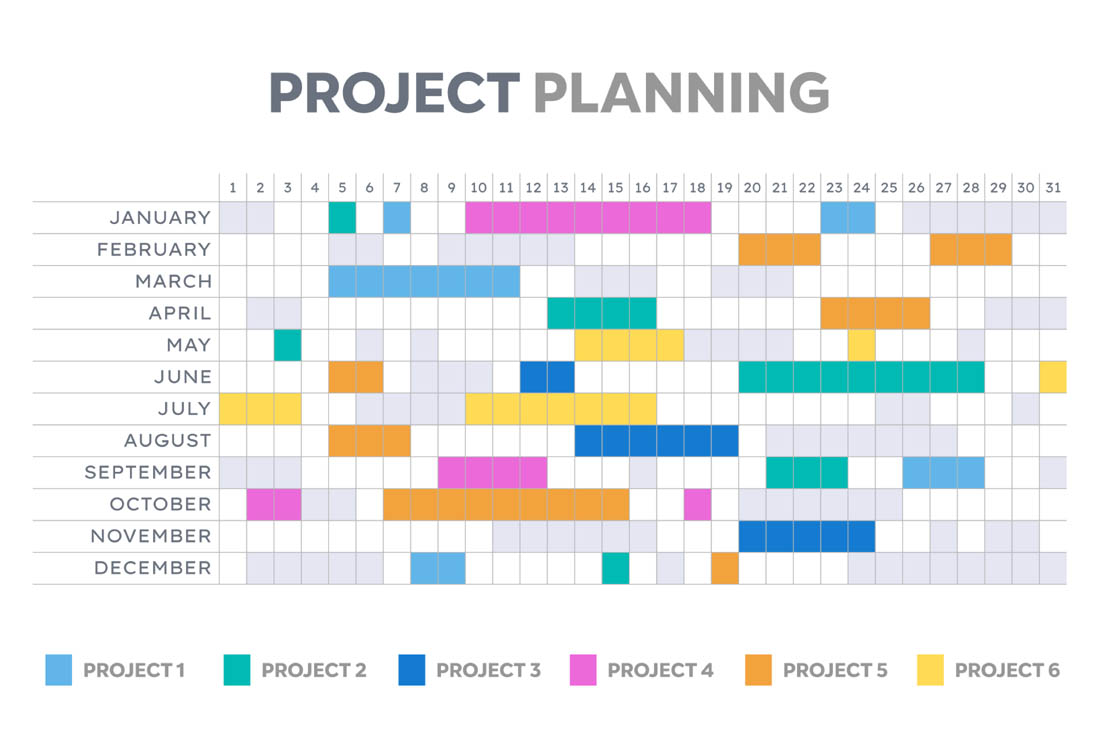Preventing employee burnout has been a concern for companies for years, but recent stressors have pushed its importance to a top priority for many organizations. Finding the balance between being a high-performing organization and having a healthy employee base is an important part of workforce management for any business that wants to get ahead. As companies strive for higher productivity and efficiency, it’s crucial to prioritize the well-being and mental health of employees.
In this guide, we’ll explore the different aspects of employee burnout, its impact on workplace productivity, and strategies to prevent it.
What is employee burnout?
Employee burnout is a diagnosable condition characterized by feelings of exhaustion, cynicism and reduced professional effectiveness. It can show up in many ways, like decreased motivation, chronic fatigue and increased irritability. Burnout isn’t easy to overcome with a good night’s sleep or a short vacation. It requires a comprehensive approach to address the underlying causes and provide support to the individual affected.
One of the key contributors to employee burnout is too much work. Unrealistic expectations, unending tasks and the pressure of non-stop deadlines can lead to chronic stress and feelings of loss of control. If an employee doesn’t feel rewarded or recognized for their efforts, this can contribute even further to feelings of burnout.
Another factor that can cause burnout is a lack of work-life balance. When employees can’t seem to find time to turn their brains off, whether that’s through relaxing, hobbies or spending time with loved ones, dissatisfaction and imbalance are sure to follow. Whether it’s a workplace culture built through competition, top-down demands from the CEO or just an individual employee’s drive to do well, this kind of imbalance can be a straight path to burnout.
The impact of burnout on workplace productivity
Burnout doesn’t just affect employees on an individual level. It can also impact workplace productivity as a whole. When employees are burnt out, they’re more likely to take sick days or extended leaves of absence. They can also be more disengaged when they’re at work, which can increase their dissatisfaction and create a reinforced feedback loop of burnout.
Employee burnout can also be contagious. When an employee is experiencing burnout, their colleagues can also experience a decrease in morale and engagement. As workloads increase due to other employees being too burned out to work, the symptoms can spread rapidly throughout the workplace.
According to studies, employee burnout can cause a number of issues in an organization. For instance, a recent study from Gallup showed that employees experiencing burnout are:
- 63% more likely to take a sick day
- 2.6 times more likely to be looking for a new job
- 23% more likely to need a trip to the emergency room
- 50% less likely to talk about their performance goals with their supervisors
- 13% less confident in their ability to do their job
All of these issues on an individual level lead to reduced productivity, lost time and increased costs for organizations. Burnout isn’t just bad for employees on an individual level. It has a significant impact on organizations as a whole. Recognizing the signs and implementing strategies to prevent and address it is crucial for organizations that want to create a healthy work environment.
Causes of employee burnout
Understanding the underlying causes of burnout is important to be able to combat it and prevent it. Burnout can be caused by both work and personal matters, and it’s important for employers to address both to create a culture of support and health for their employees.
Work-related factors
Work-related causes of burnout include high job demands, long working hours, lack of control or flexibility, work overload and poor work-life balance. Unrealistic expectations, constant pressure and a lack of recognition in the workplace also contribute to burnout.
Personal life factors
Burnout may be related to work, but issues at home can lead to burnout as well. Financial stress, relationship issues and health problems can significantly impact an employee’s well-being. Struggling to juggle personal and professional responsibilities can contribute to burnout.
How to identify signs of employee burnout
Paying attention to signs of employee burnout is the first step in addressing the issue before it escalates. By being aware of the symptoms, managers and employers can take action quickly to prevent burnout and promote a healthy work environment.
Physical symptoms of burnout
Physical symptoms of burnout may include:
- Chronic fatigue or exhaustion
- Headaches
- Stomachaches
- Recurring illness from a weakened immune system
- Trouble sleeping
- Weight loss or gain
Some of these symptoms may be obvious at work, while others may be less apparent to an employer. It can be difficult to talk to an employee about their health, and if they’re already stressed at work, they may be less likely to speak up about issues they have. A manager or colleague may notice that an employee has been calling out of work more often or is speaking up less in meetings.
Emotional indicators of burnout
Employees who are going through burnout may have several emotional indicators, such as:
- Cynicism or pessimism
- Detachment from work projects
- Lack of satisfaction
- Irritability or short tempers
- Difficulty concentrating
- Loss of motivation
- Feelings of isolation
Again, an employee who feels stressed out by deadlines or work overwhelm may not feel empowered to discuss their emotional state with their employer. They may try to hide their feelings from other team members, which can increase their risk of burnout.
10 ways to prevent employee burnout
Preventing employee burnout requires a comprehensive, proactive approach that focuses on promoting well-being, work-life balance and creating a supportive work environment. Here are some strategies that organizations can implement:
1. Promote work-life balance
Encouraging a healthy work-life balance is essential in preventing burnout. Organizations can establish policies that prioritize personal time and discourage employees from working excessive overtime. Volkswagen famously did this in 2011 when they shut off employee email access after hours. Other companies have implemented days that the company is shut down beyond federal holidays to make sure all employees have regular, expected breaks from work as part of the entire company’s schedule.
2. Encourage regular breaks
While holidays and time off are important, employees should also spend time away from their work on a day-to-day basis. Taking a break during the day can greatly reduce stress and restore employees’ creativity. Many workplaces have regulations around mandated breaks, such as lunch or scheduled breaks for hourly employees. Digital employees can be encouraged to take time during the day to go to the gym, take a walk or eat something away from their desks. Employees who take breaks tend to be more productive and burnout less often than those who work through their lunch breaks.
3. Implement flexible work hours
While not every office can offer employees a work-from-home arrangement, offering flexible work schedules can help empower employees to have more control over their time, which can reduce work-related stress. Employees with flexible schedules can take care of tasks at home that may contribute to their feeling overwhelmed, such as doctor appointments, childcare or home care issues.
4. Offer mental health benefits
Giving your employees the tools to take action on their mental health can have positive benefits and reduce burnout. Traditional mental health benefits like healthcare insurance often include an employee assistance program (EAP) to help employees deal with personal issues at home. Other options can include a partnership with counseling programs during particularly stressful times or even an employer-subsidized subscription to an app like Calm or Happify. You can also encourage employees to take mental health days by offering them as you would other sick days or paid time off.
5. Listen to employees
As we’ve pointed out, employees who are experiencing burnout are less likely to talk to their supervisors about the issue than those who aren’t. This means employers need to create ways for employees to communicate issues before they become a problem. Regular check-ins, anonymous surveys and scheduled reviews can give employees an outlet to discuss their concerns. You should also encourage managers to watch for non-verbal cues that employees are experiencing or about to experience burnout, such as withdrawal during meetings, absenteeism or other signs of fatigue.
6. Create a healthy social culture
Most of us spend a third of our time at work, whether that’s in an office or online. Allowing employees to socialize with each other in a non-work setting can help increase trust and goodwill while also giving individuals a chance to destress. Holiday functions like potlucks or game days can help employees feel less stressed about their work and help them get to know each other better.
7. Use technology to improve work
Finding the right tools for employees to do their work can improve engagement significantly. Employees who can effectively communicate, manage projects and get their work done are more likely to feel better about their work. Empower employees by giving them the tools they need and the training to use those tools effectively. Updating your technology to automate boring and repetitive tasks can free employees up for more engaging work, which can also lead to less burnout and more job satisfaction.
8. Use data and metrics to balance workloads
Another way to prevent burnout is by gaining insight into how much and how well employees are working. You can monitor productivity and manage workload using activity tracking tools like ActivTrak workforce analytics to get insight into where employees may be overworked and more likely to burn out.
9. Lead by example
Employees often feel pressure to live up to their boss’s expectations, and they tend to look to how leaders act to get cues on how they should behave at work. If leaders are consistently working overtime, skipping holidays or not participating in social functions, employees are likely to do the same.
10. Promote Continuous Skill Development
Burnout often stems from feeling stagnant in a role. Offer opportunities for employees to upskill and grow professionally through workshops, online courses, or mentorship programs. Regular training not only enhances their skill set but also keeps them engaged and motivated. By showing a commitment to their growth, you demonstrate that their contributions are valued, which helps boost morale and prevent employee burnout. Consider creating a development budget or allocating specific time during the workweek for professional learning activities.
Prevent employee burnout with ActivTrak
Understanding employee workloads is the first step in preventing employee burnout in your organization. Use ActivTrak to find the signs of burnout, compare workloads to better balance them, visualize work patterns to support health habits and share insights into productivity to collaborate on improvements. Schedule a free demo today to see how ActivTrak can help you prevent burnout and help your employees feel more productive and engaged.





